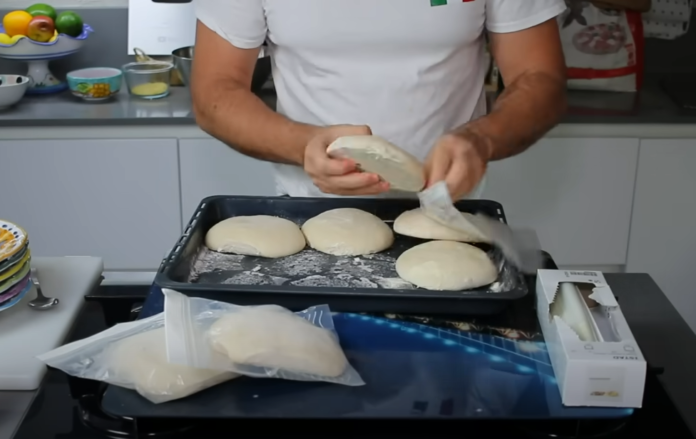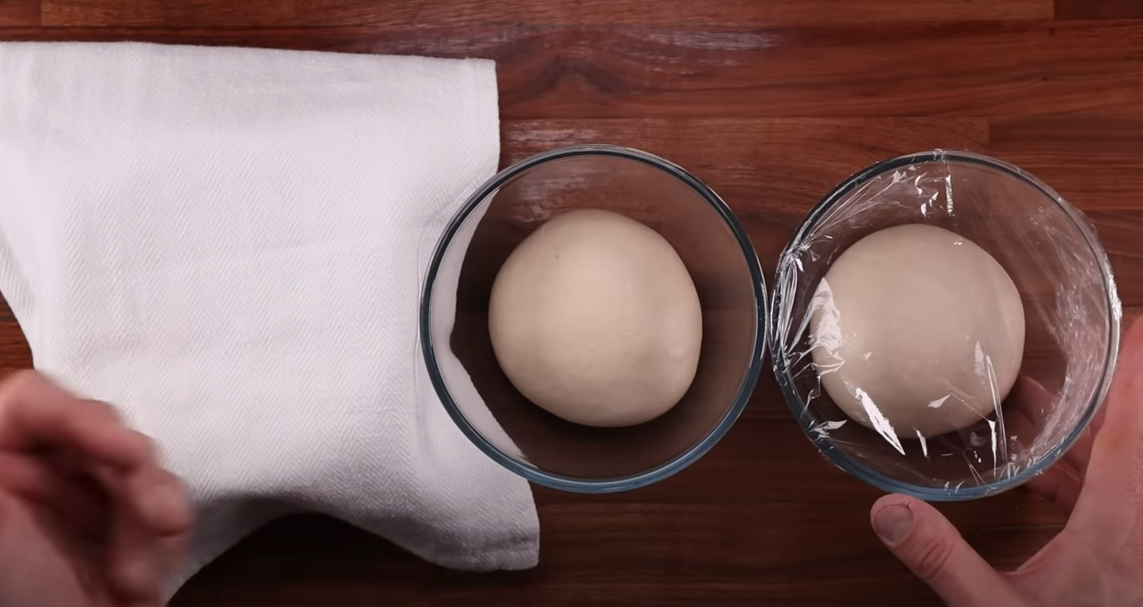Refrigerate pizza dough by tightly wrapping it in plastic wrap and placing it in the refrigerator. To ensure freshness and preservation of your pizza dough, refrigeration is a simple and effective method.
By tightly wrapping the dough in plastic wrap and placing it in the refrigerator, you can extend its shelf life and keep it ready for future use. Whether you are a professional chef or a home cook, this technique allows you to prepare the dough ahead of time, saving you precious minutes when you’re ready to bake.
We will discuss the importance of refrigerating pizza dough and provide you with step-by-step instructions on how to properly refrigerate it. So, let’s dive in and discover how to keep that dough fresh and ready for your next pizza night!
Choosing The Right Container
When it comes to storing pizza dough in the refrigerator, selecting the right container plays a crucial role in maintaining its freshness and quality.
Airtight Containers
Airtight containers are an ideal choice for refrigerating pizza dough. They help to seal in moisture and prevent the dough from drying out.
Plastic Wrap Vs. Zip-top Bags
The plastic wrap provides a tight seal and is convenient for shaping the dough. On the other hand, zip-top bags are reusable and great for storing portioned dough.
Temperature And Placement
Temperature and placement are key factors when it comes to refrigerating pizza dough. By following the right temperature guidelines and ensuring proper placement, you can maintain the dough’s freshness and quality.
Ideal Refrigerator Temperature
Set the ideal refrigerator temperature for storing pizza dough between 35°F to 45°F. This range allows the dough to rest and rise slowly without overly freezing or experiencing excessive yeast activity. Avoid temperature fluctuations, as they can negatively affect the dough’s texture and taste.
Avoiding Direct Contact With Cold Surfaces
When refrigerating pizza dough, it’s important to protect it from direct contact with cold surfaces. This prevents the dough from sticking and freezing, which can lead to difficulties when preparing the pizza.
To avoid direct contact, consider using a pizza dough storage container or an airtight plastic bag. These options act as a barrier between the dough and the cold surfaces of the refrigerator, maintaining its shape and preventing unwanted absorption of flavors from other stored items.
If you don’t have a specific container, you can also lightly oil a bowl or dish, place the dough inside and cover it tightly with plastic wrap. This method helps create a barrier and prevents the dough from sticking to the surface of the container.
Avoid placing the dough directly on the refrigerator shelves or in open containers, as this increases the chances of the dough absorbing unwanted odors and flavors.
By understanding the ideal refrigerator temperature and taking precautions to avoid direct contact with cold surfaces, you can effectively refrigerate pizza dough and ensure it remains fresh and ready for the perfect pizza-making experience.
Duration Of Refrigeration
Refrigerating pizza dough is a great way to plan for delicious homemade pizza. The duration of refrigeration can affect the taste, texture, and rise of the dough. Understanding the different lengths of refrigeration and their effects is essential for achieving the perfect pizza crust.
Short-term Vs. long-term Storage
When refrigerating pizza dough, short-term storage refers to keeping the dough in the refrigerator for no more than 48 hours. Long-term storage, on the other hand, involves storing the dough for more than 48 hours, typically up to several days. Both methods have their own set of advantages and disadvantages.
Effects Of Extended Refrigeration
Extended refrigeration can cause changes in the dough’s fermentation process, leading to differences in flavor and texture. While short-term refrigeration allows the dough to develop some flavor, long-term refrigeration can result in a more pronounced, tangy flavor and a chewier crust. It’s important to consider these effects when deciding how long to refrigerate your pizza dough.
Refrigerating Different Dough Types
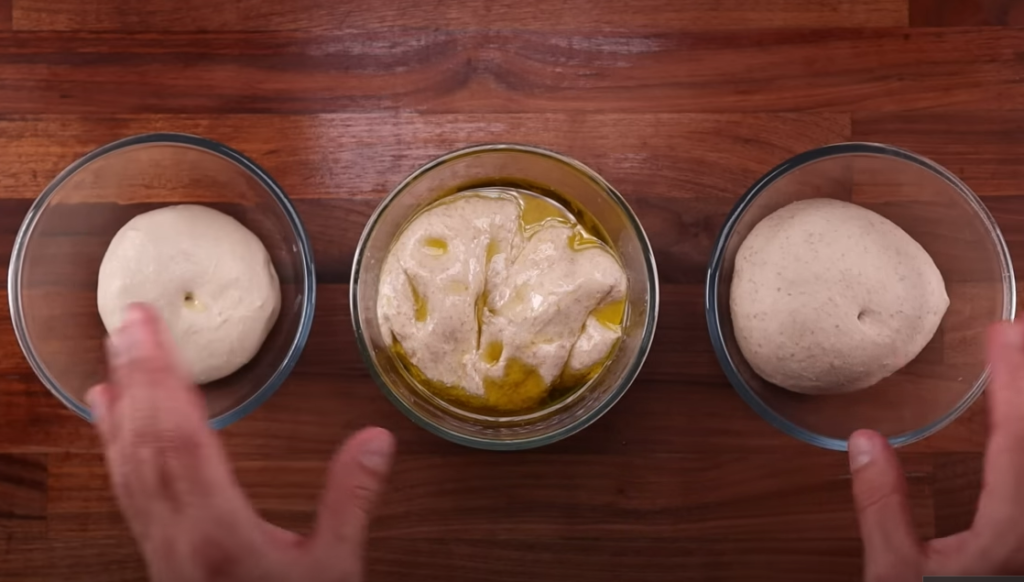
Yeast-based Dough
Yeast-based dough, commonly used for classic pizza crusts, benefits from refrigeration due to its slow fermentation process. Once the dough is prepared, cover it tightly with plastic wrap and store it in the refrigerator. This method allows the yeast to ferment slowly, resulting in a richer flavor and improved texture. When ready to use, let the dough come to room temperature before shaping and baking.
Quick-rise Dough Variations
Quick-rise dough variations, such as no yeast or sourdough, can also be refrigerated for convenience. Before refrigerating, shape the dough into a ball and place it in an airtight container. The cold temperature of the refrigerator slows down the rising process, providing flexibility in baking times. Upon removal from the fridge, allow the dough to rest at room temperature before proceeding with shaping and baking.
Thawing Pizza Dough
Refrigerating pizza dough is a great way to make it last longer. When you are ready to use it, transfer the dough to the refrigerator and let it thaw overnight. This method ensures your pizza dough is ready to use when you are.
The Source: How to Soften Pizza Dough
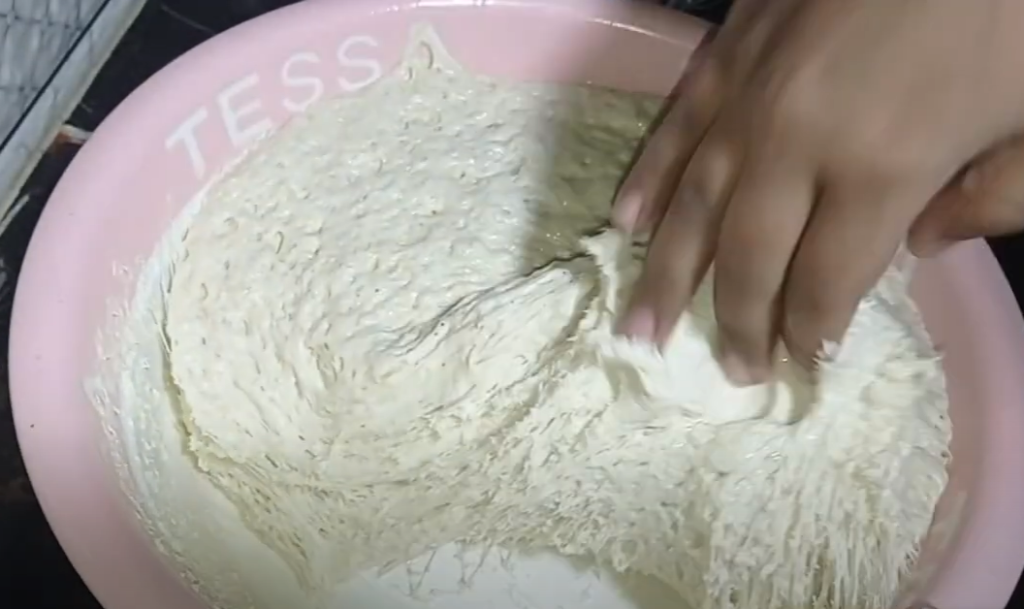
How To Thaw Pizza Dough: Refrigerator Thawing Method
Thawing pizza dough is a crucial step in the pizza-making process. It ensures that your dough is soft, pliable, and ready to be transformed into a delicious pizza. One popular method of thawing pizza dough is by utilizing the refrigerator. This method is effective and convenient for those who like to plan their meals ahead of time.
The refrigerator thawing method involves transferring your frozen pizza dough from the freezer to the refrigerator and allowing it to thaw slowly over some time. This method prevents the dough from drying out while still ensuring that it reaches the ideal temperature for easy handling. Here’s how you can thaw your pizza dough using the refrigerator method:
- Remove the frozen pizza dough from the freezer.
- Place the dough in a bowl or container that is large enough to accommodate its expansion as it thaws.
- Cover the bowl or container with plastic wrap or a damp cloth to prevent the dough from drying out.
- Transfer the bowl or container to the refrigerator.
- Allow the dough to thaw in the refrigerator for at least 24 hours. Thawing times may vary depending on the size and thickness of your dough.
Once your pizza dough has thawed, it will be ready to use. Remember to let the dough sit at room temperature for about 30 minutes to an hour before rolling it out and shaping it into your desired pizza crust. This will allow the gluten in the dough to relax and make it easier to stretch.
Room Temperature Thawing
If you’re short on time and need to thaw your pizza dough quickly, you can use the room-temperature thawing method. This method is faster than the refrigerator method but requires more immediate attention and monitoring to prevent the dough from over-proofing or drying out.
Here’s how you can thaw your pizza dough using the room temperature method:
- Remove the frozen pizza dough from the freezer.
- Place the dough in a bowl or container on your kitchen counter.
- Cover the bowl or container with plastic wrap or a damp cloth to prevent the dough from drying out.
- Allow the dough to thaw at room temperature for approximately 2 to 4 hours. Thawing times may vary depending on the size and thickness of your dough.
After your dough has thawed, it is essential to remember to let it sit at room temperature before using it. This will ensure that it is the right temperature throughout and will prevent any uneven cooking or texture issues when you bake your pizza.
Signs Of Dough Spoilage
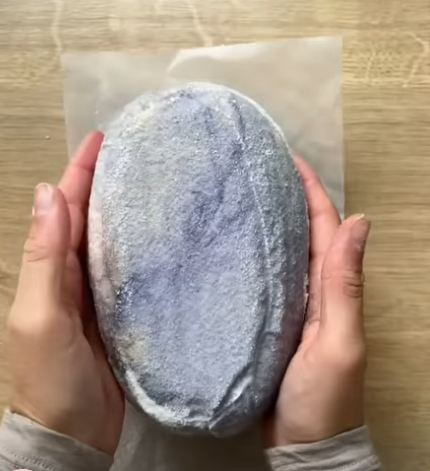
Spotting potential issues is crucial when storing pizza dough in the fridge. Be aware of the following signs that may indicate spoilage:
Visual Changes
- Discoloration: Dough turns gray or develops dark spots.
- Mold: Visible signs of mold growth on the surface.
- Abnormal Texture: Gritty or slimy consistency upon touch.
Off Odors
- Foul Smell: Unpleasant or sour odor emanating from the dough.
- Chemical Scent: Smells like chemicals or rotten.
- Yeast Gone Bad: off-putting aroma indicating yeast spoilage.
Using Refrigerated Pizza Dough
Refrigerating pizza dough is a convenient way to save time and make delicious pizzas at home. By properly storing the dough in the refrigerator, you can extend its shelf life and have it ready for whenever you’re craving a homemade slice.
Tips For Successful Baking
Using refrigerated pizza dough helps make weeknight dinners a breeze.
- Always remember to let the dough sit at room temperature for about 30 minutes before shaping it.
- Preheat your oven to the recommended temperature as per the pizza recipe.
- For a crispier crust, pre-bake the dough for a few minutes before adding your toppings.
- Brush olive oil on the edges of the crust for a golden finish.
Recipe Suggestions
Using refrigerated pizza dough opens up a world of culinary possibilities.
- Margherita Pizza: Top the dough with fresh mozzarella, tomato slices, and basil leaves for a classic favorite.
- BBQ Chicken Pizza: Brush the dough with BBQ sauce, shredded chicken, red onions, and cheddar cheese.
- Veggie Supreme Pizza: Load up the dough with bell peppers, mushrooms, olives, and red onions for a colorful and flavorful option.
Frequently Asked Questions On How To Refrigerate Pizza Dough
How Long Can You Refrigerate Pizza Dough?
You can refrigerate pizza dough for up to 3 days in an airtight container.
Can you freeze pizza dough for later use?
Yes, you can freeze pizza dough for up to 3 months. Thaw it in the fridge before using it.
Should I let the dough come to room temperature before baking?
Yes, allow the refrigerated or frozen pizza dough to come to room temperature before baking.
How Do I Store Leftover Pizza Dough?
Wrap the leftover pizza dough in plastic wrap and store it in an airtight container in the refrigerator.
Can I Refrigerate Pizza Dough After It Has Risen?
Yes, you can refrigerate pizza dough after it has risen, but make sure it’s tightly covered.
Conclusion
Refrigerating pizza dough is a simple yet effective way to enhance its flavors and textures. By following the proper steps, such as wrapping the dough tightly in plastic wrap and storing it in a cool environment, you can enjoy freshly made pizza anytime.
Remember to let the dough rest and come to room temperature before using it. With these tips, you can always have homemade pizza dough ready to be transformed into delicious pizzas in no time!

